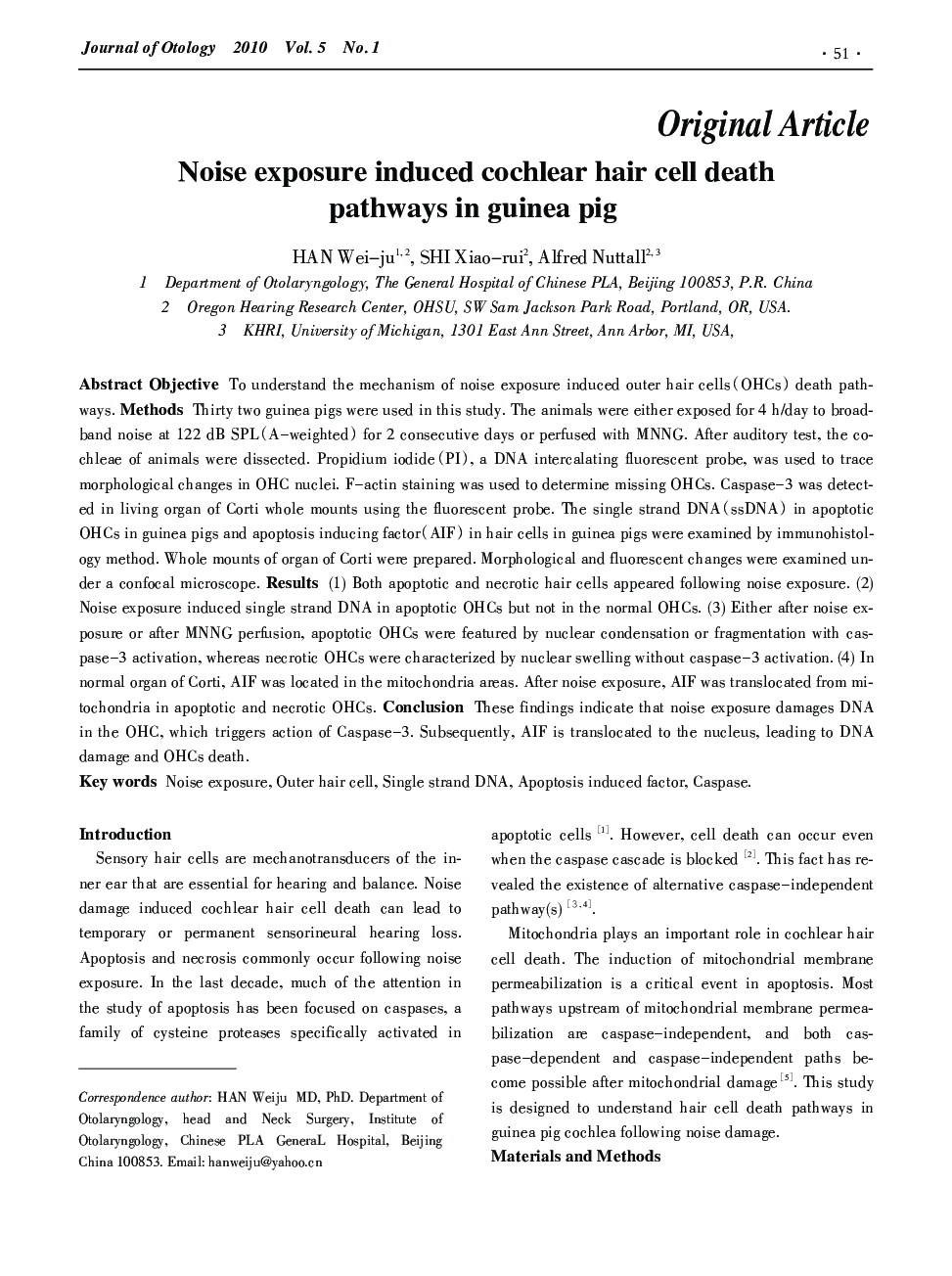| Article ID | Journal | Published Year | Pages | File Type |
|---|---|---|---|---|
| 4116802 | Journal of Otology | 2010 | 6 Pages |
ObjectiveTo understand the mechanism of noise exposure induced outer hair cells (OHCs) death pathways.MethodsThirty two guinea pigs were used in this study. The animals were either exposed for 4 h/day to broadband noise at 122 dB SPL(A–weighted) for 2 consecutive days or perfused with MNNG. After auditory test, the cochleae of animals were dissected. Propidium iodide (PI), a DNA intercalating fluorescent probe, was used to trace morphological changes in OHC nuclei. F–actin staining was used to determine missing OHCs. Caspase–3 was detected in living organ of Corti whole mounts using the fluorescent probe. The single strand DNA(ssDNA) in apoptotic OHCs in guinea pigs and apoptosis inducing factor(AIF) in hair cells in guinea pigs were examined by immunohistology method. Whole mounts of organ of Corti were prepared. Morphological and fluorescent changes were examined under a confocal microscope.Results(1) Both apoptotic and necrotic hair cells appeared following noise exposure. (2) Noise exposure induced single strand DNA in apoptotic OHCs but not in the normal OHCs. (3) Either after noise exposure or after MNNG perfusion, apoptotic OHCs were featured by nuclear condensation or fragmentation with caspase–3 activation, whereas necrotic OHCs were characterized by nuclear swelling without caspase–3 activation. (4) In normal organ of Corti, AIF was located in the mitochondria areas. After noise exposure, AIF was translocated from mitochondria in apoptotic and necrotic OHCs.ConclusionThese findings indicate that noise exposure damages DNA in the OHC, which triggers action of Caspase–3. Subsequently, AIF is translocated to the nucleus, leading to DNA damage and OHCs death.
